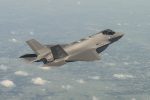In a significant step toward modernizing its rotary-wing capabilities and deepening NATO interoperability, Lithuania has received its first two UH-60M Black Hawk helicopters from the United States. The delivery marks a milestone in the Baltic state’s $213 million Foreign Military Sales (FMS) agreement with Washington aimed at replacing its aging fleet of Soviet-era Mi-8 transport helicopters.
Strategic Shift from Soviet Legacy to NATO Interoperability
The Lithuanian Armed Forces have operated Mil Mi-8T helicopters since the early 1990s—a legacy platform inherited after regaining independence from the Soviet Union. While rugged and reliable in their time, the Mi-8s are increasingly costly to maintain and lack compatibility with NATO-standard communications and mission systems.
The transition to the UH-60M Black Hawk—one of the most widely used utility helicopters in NATO—represents not just a hardware upgrade but a doctrinal alignment with Western operational standards. The move enhances Lithuania’s ability to participate in joint exercises and operations across Europe under Allied command structures.
According to Lithuanian Defence Minister Arvydas Anušauskas, “The arrival of these helicopters is an important step toward strengthening our national defense and ensuring our forces are equipped for modern battlefield requirements.”
Details of the $213 Million FMS Package
The total value of Lithuania’s helicopter modernization program is approximately $213 million, partially funded through U.S. Foreign Military Financing (FMF). The deal includes:
- Four UH-60M Black Hawk helicopters (two delivered in October 2025; two more expected by end of 2026)
- Spare parts and maintenance support packages
- Pilot and crew training programs conducted by U.S. Army instructors
- Mission equipment including secure communications systems and defensive aids suites
- Ground support equipment and logistics infrastructure upgrades
The UH-60Ms are being delivered via an FMS contract managed by the U.S. Army Security Assistance Command (USASAC), with Sikorsky (a Lockheed Martin company) serving as the prime contractor.
UH-60M Capabilities Compared to Mi-8T
The UH-60M variant is equipped with modern avionics including digital glass cockpits (Rockwell Collins Common Avionics Architecture System), GPS/INS navigation systems, dual digital flight control computers, and improved General Electric T700-GE-701D engines delivering greater power-to-weight ratio than earlier models.
| Capability | UH-60M Black Hawk | Mi-8T Hip-C |
|---|---|---|
| Crew + Troops Capacity | 4 crew + up to 11 troops | 3 crew + up to 24 troops |
| Cruise Speed | 280 km/h | 230 km/h |
| Range (internal fuel) | 510 km | 465 km |
| Sling Load Capacity | 4,082 kg (external) | 3,000 kg (external) |
| NATO Interoperability Features | Tactical radios (Link16-ready), IFF Mode V/S; NVG-compatible cockpit; encrypted comms; MILSTD interfaces | Lacks standard NATO datalinks or encryption; analog instruments |
Baltic Regional Implications and Force Integration Plans
Lithuania’s acquisition aligns with broader regional trends among Baltic states seeking to phase out Soviet-era platforms in favor of Western systems amid heightened security concerns following Russia’s full-scale invasion of Ukraine in February 2022.
The new UH-60Ms will be integrated into Lithuania’s Air Force Aviation Base at Šiauliai Air Base—also home to NATO’s Baltic Air Policing mission—and will support missions including:
- Tactical troop transport for Lithuanian Land Forces battalions during exercises or contingencies;
- Medevac operations with NATO-standard medical kits;
- SAR support across Lithuania’s airspace;
- Civil-military emergency response tasks such as wildfire suppression or disaster relief;
- Pilot training for future expansion of rotary-wing capabilities.
Lithuania’s Long-Term Rotary-Wing Modernization Strategy
The current procurement covers four aircraft but may serve as a stepping stone for future acquisitions depending on funding availability and operational demand. Lithuanian defense planners have signaled interest in expanding their helicopter fleet beyond current levels by the early 2030s.
This initial batch also sets conditions for deeper logistics cooperation with other regional operators such as Poland—which operates S70i variants—and Latvia which is evaluating similar platforms. Shared training pipelines or regional MRO hubs could emerge as cost-effective force multipliers.









